Imagine a world where enormous cats once prowled the wilderness with teeth so long, they looked like ivory daggers. Most people know Smilodon, the legendary saber-toothed “tiger,” but its story is just the tip of the iceberg. All across prehistoric Earth, other saber-toothed predators left their mysterious marks in stone and bone. Some looked like modern cats; others seemed to step right out of a fantasy novel, blending the familiar with the bizarre. Each one had its own way of surviving, hunting, and shaping the world around it. Today, we’ll wander back in time to meet these misunderstood giants—discovering their quirks, habitats, and small wonders that still leave paleontologists in awe. Ready to meet some wild relatives you’ve never heard of? Let’s set off on this ancient adventure together.
The Original Saber-Tooth: Machairodus

Machairodus is a name that echoes through the fossil record with quiet power. This cat was actually larger than Smilodon, sporting a muscular body and those unmistakable elongated canine teeth. What’s fascinating is that Machairodus didn’t just rely on brute force. Its saber teeth were finely serrated, almost like nature’s steak knives, perfect for slicing through thick hides. Unlike today’s big cats, Machairodus probably hunted in open woodlands and grasslands, stalking giant herbivores that no longer roam the Earth. There’s something humbling about imagining such a formidable hunter blending into golden grasses, waiting for the perfect moment. Even its fossils, scattered across Europe, Asia, and Africa, whisper stories of a world where survival meant both strength and subtlety. Machairodus reminds us that the past was every bit as dramatic and surprising as any wildlife drama today.
Europe’s Shadowy Hunter: Homotherium
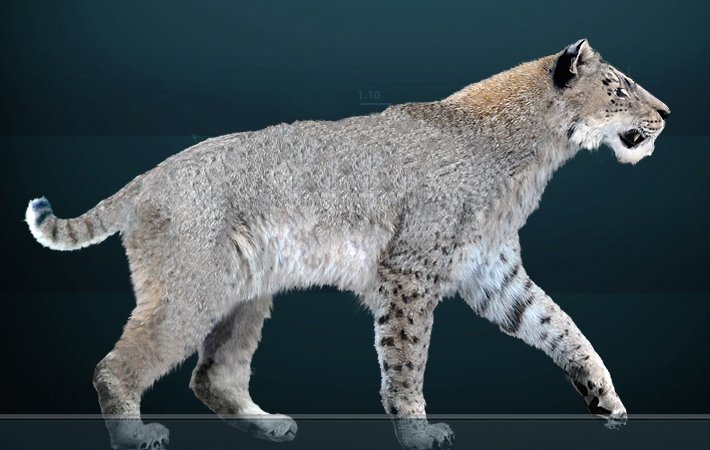
Homotherium, sometimes called the “scimitar cat,” had a different style altogether. Its saber teeth were shorter and broader than Smilodon’s, curving like crescent moons. Homotherium was a traveler—it roamed from North America to Eurasia, adapting to changing climates and prey. Scientists believe it may have hunted in groups, which is rare among cats, giving it a wolf-like social twist. Its long limbs and sloping back hint at a creature built for endurance, not just ambush. There’s a haunting beauty to Homotherium’s story: it survived for over four million years, outlasting many of its saber-toothed cousins. When you picture it moving silently through Ice Age dusk, you can almost feel the chill and sense the pulse of ancient herds just beyond the trees. Homotherium teaches us that adaptation and cooperation can make even the fiercest survive longer than expected.
The Bulldog Cat: Megantereon
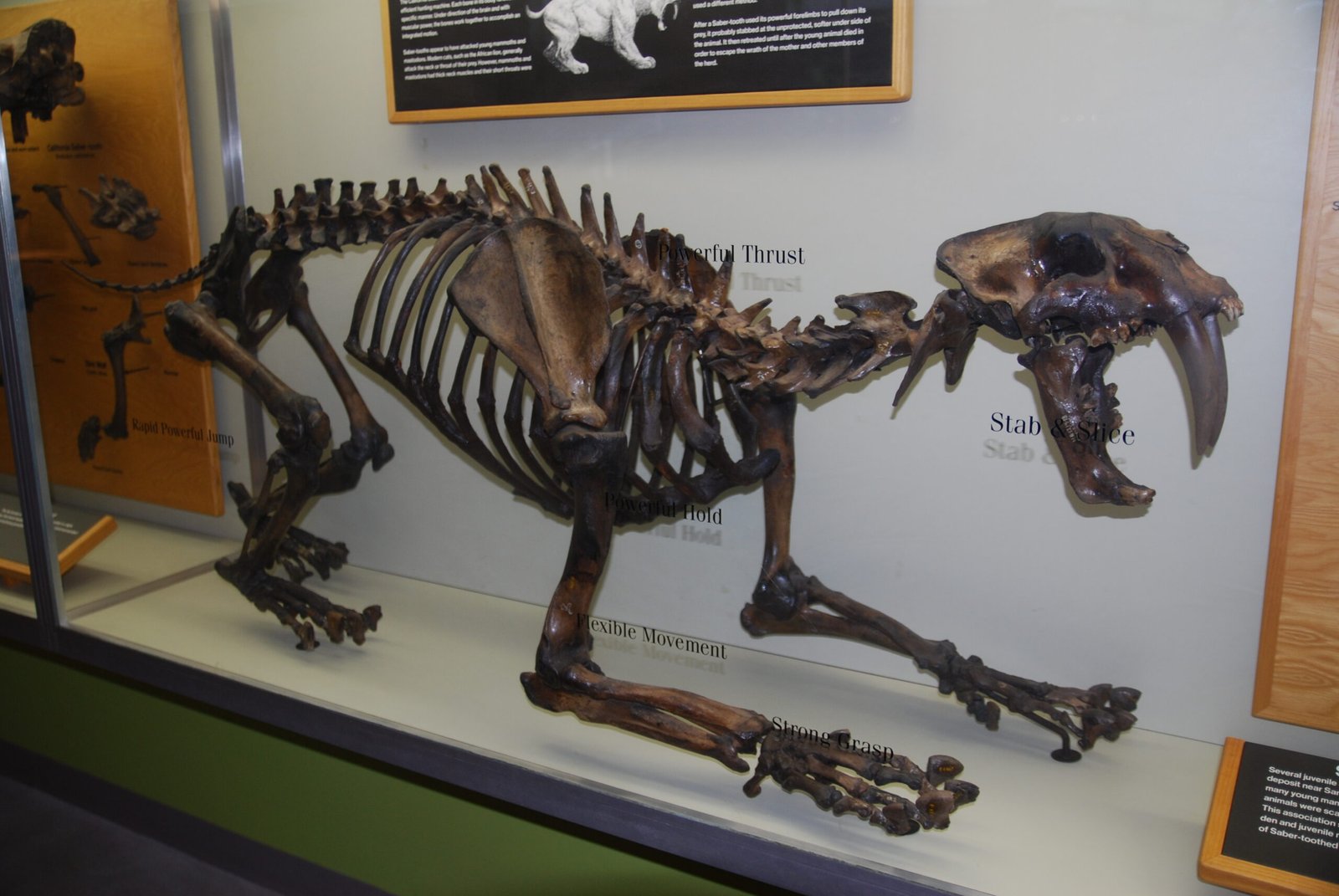
Megantereon might win an award for “most overlooked saber-tooth.” Its body was compact and powerful, almost like a feline bulldog, and its saber teeth were sharp but not too long to get in the way. This cat ranged from Africa to Asia and even Europe, making its mark wherever it went. Fossil evidence suggests Megantereon was an ambush predator, relying on stealth and sudden bursts of power to take down prey. Imagine a dense forest, filtered light, and this muscular hunter waiting, barely breathing, for a deer to wander too close. There’s something intimate about the way Megantereon lived—less about spectacle, more about patience and precision. Its bones, sometimes found near ancient human settlements, hint at a time when our ancestors might have glimpsed these cats through the trees. Megantereon’s quiet strength is a reminder of nature’s many hidden wonders.
A Cat-Like Impostor: Thylacosmilus
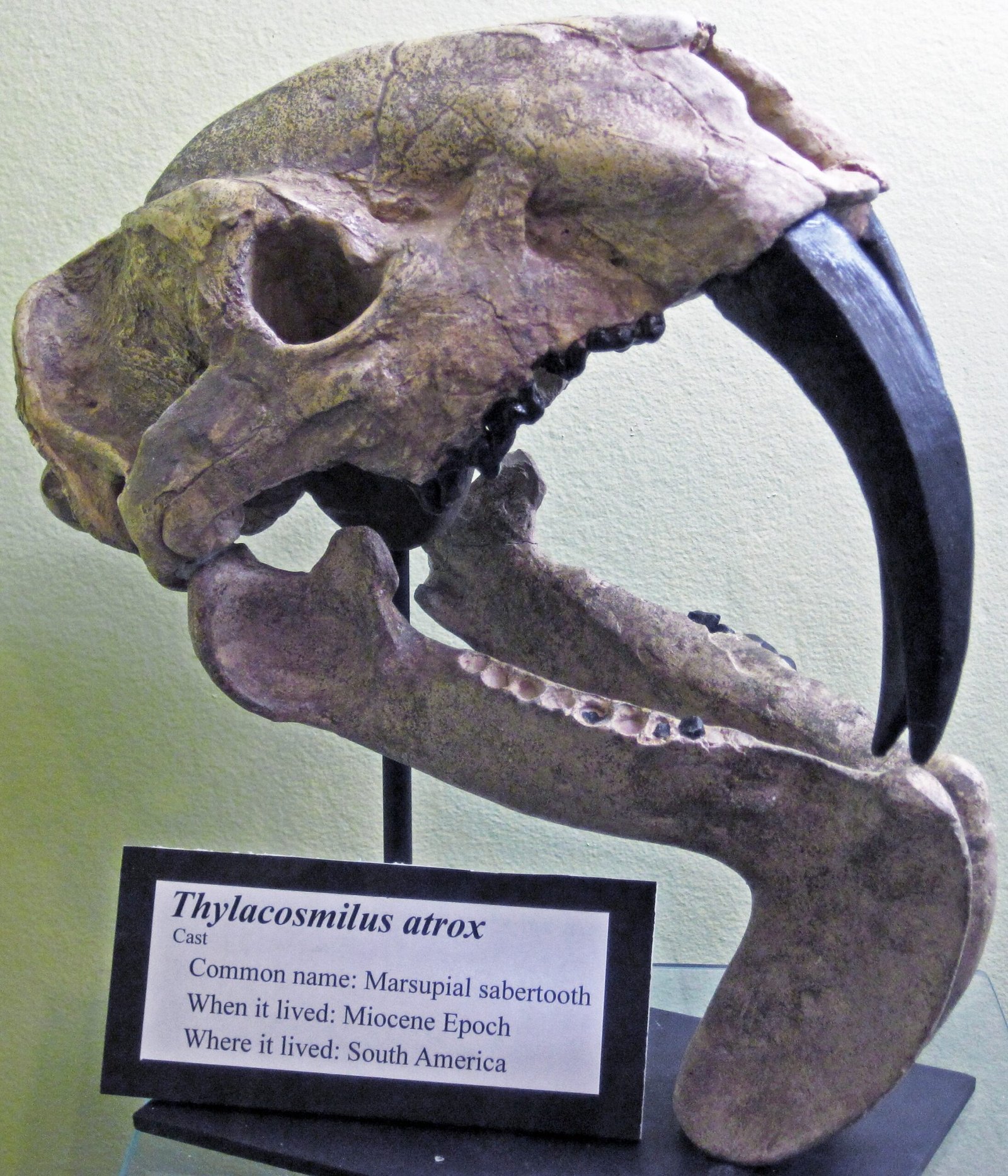
Thylacosmilus is a true oddball in the saber-tooth family—because it wasn’t really a cat at all! This predator lived in South America and was actually a marsupial, more closely related to kangaroos than lions. Yet, it grew enormous saber teeth that curved down past its lower jaw, protected by bony flanges. Somehow, evolution wrote the same “saber-tooth” story in two totally different chapters. Thylacosmilus walked on short, sturdy legs and probably ambushed prey, using its teeth as deadly tools. Its fossils always spark a sense of wonder, a gentle reminder that nature loves to experiment. There’s something humbling about a creature that looks like a saber-tooth but carries its young in a pouch. Thylacosmilus is proof that prehistoric life was full of surprises, each more fascinating than the last.
Asia’s Elusive Xenosmilus

Xenosmilus is a name that might not ring many bells, but its fossilized jaws tell a wild story. Discovered in Florida, this predator had teeth that were both broad and serrated—more like a bread knife than a dagger. Its body was stocky, powerful, and built for wrestling large prey to the ground. Some paleontologists think Xenosmilus didn’t just use its canines but bit with its whole mouth, leaving massive, ragged wounds. It hunted giant peccaries and other Ice Age mammals, carving a niche for itself in a world of giants. The thought of Xenosmilus barreling out of the brush, jaws wide, is both thrilling and a little intimidating. This cat reminds us that nature’s toolbox is always evolving, and sometimes the most effective designs are also the most unexpected.
The Nimble Nimravid: Hoplophoneus
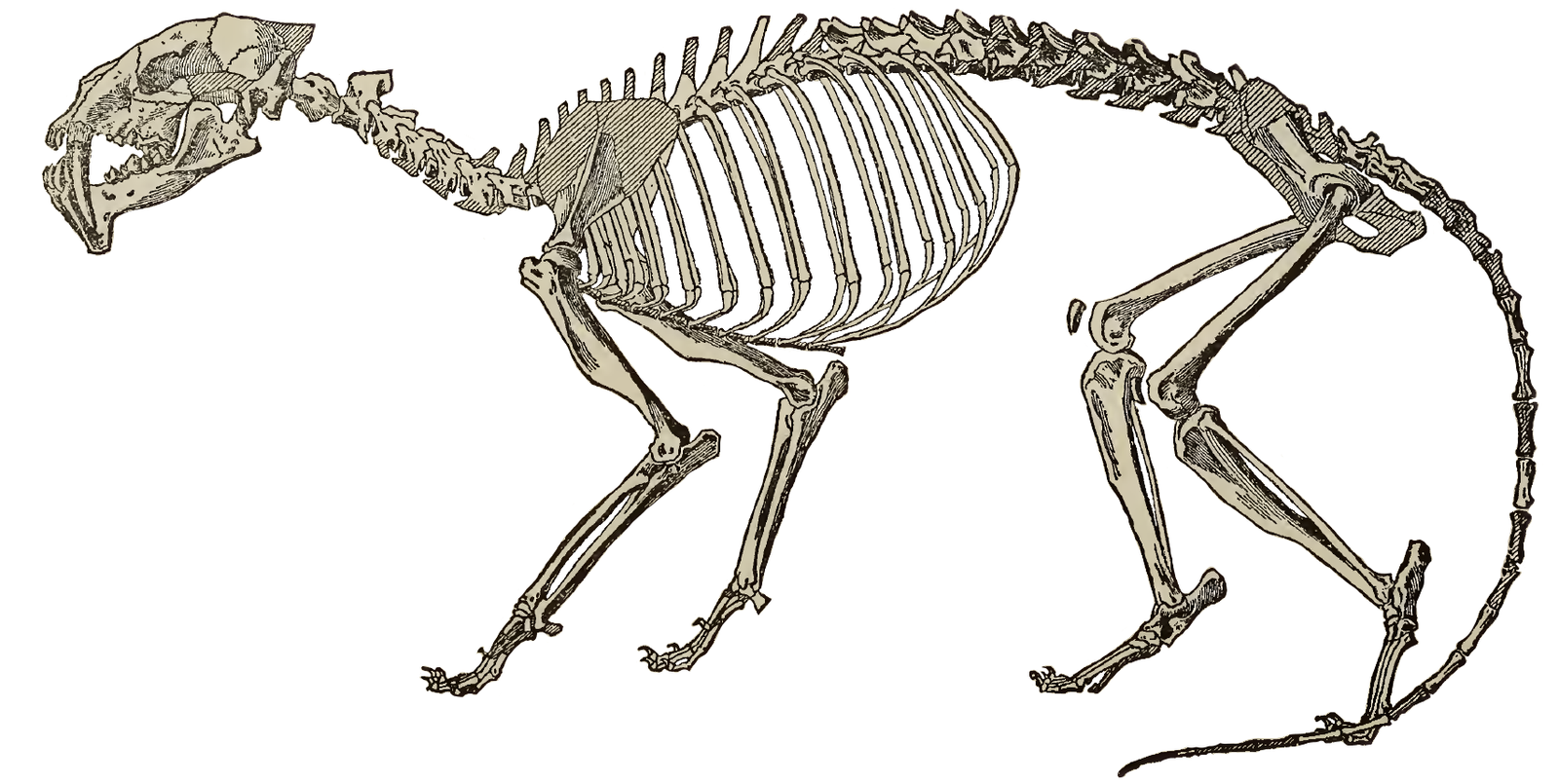
Hoplophoneus might look like a true saber-tooth, but it sits on its own unique evolutionary branch. Nimravids, sometimes called “false saber-tooths,” developed similar teeth and hunting styles as real cats, yet they were something entirely different. Hoplophoneus prowled North America’s ancient forests, hunting prey with swift, surgical strikes. Its teeth were slightly shorter than Smilodon’s but still wickedly sharp, perfect for slicing through muscle and sinew. Fossil skulls often show signs of old injuries, hinting at fierce battles—either with prey or with rivals. There’s a sense of tenacity in the way Hoplophoneus lived, a kind of ancient grit that resonates with anyone who’s ever had to fight for their place. Even though nimravids vanished long ago, their story lingers in the quiet corners of our wildest forests.
Europe’s Saber-Toothed Survivor: Paramachairodus
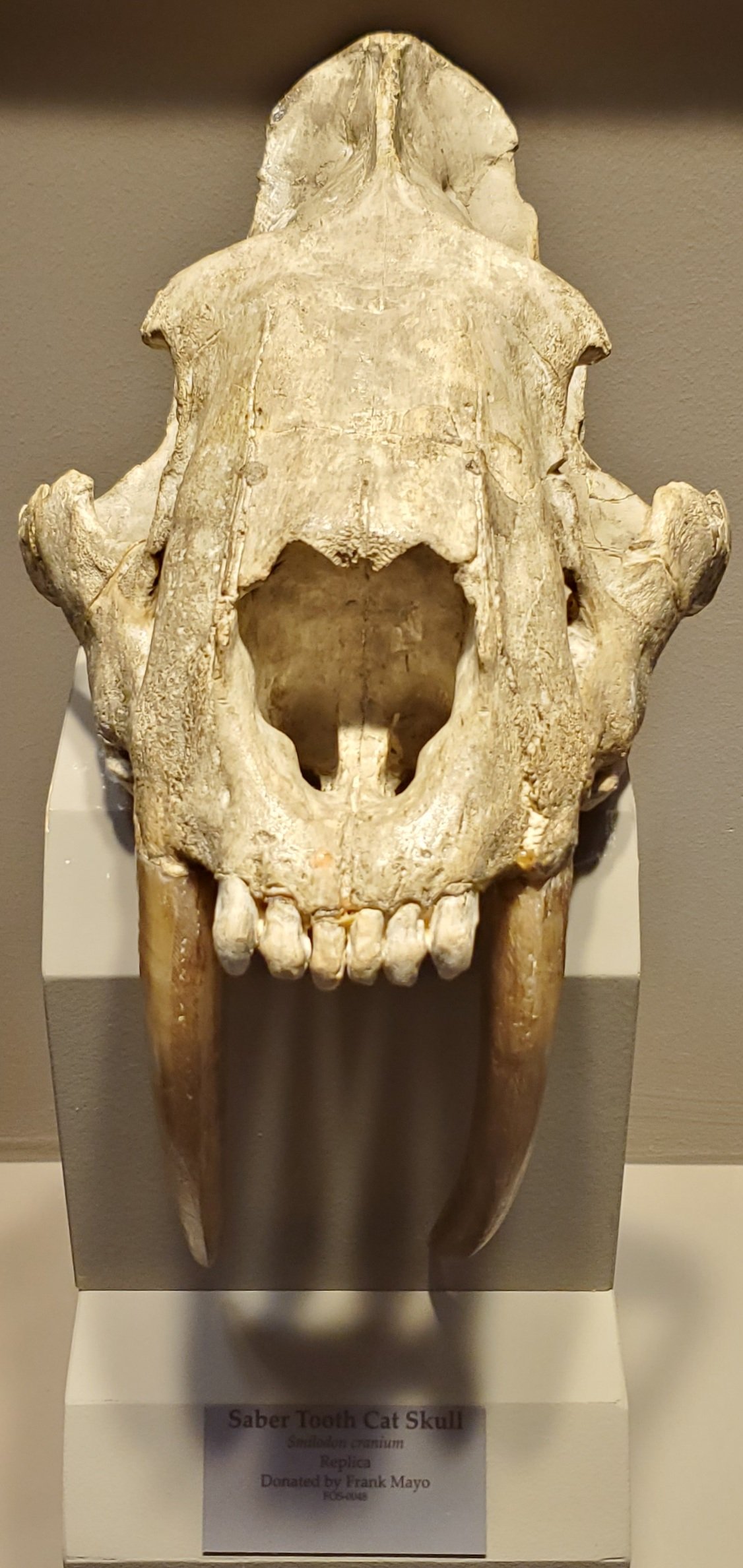
Paramachairodus might not be a household name, but it made its mark in Europe and Asia during the Miocene. With its elegant build and saber teeth, it looked every bit the part of a prehistoric predator. What’s remarkable about Paramachairodus is its adaptability—it lived in a world that was changing rapidly, filled with new plant-eaters and shifting climates. This cat seemed to thrive in woodlands and open spaces alike, always finding a way to hunt and survive. Its fossils are sometimes found near ancient waterholes, suggesting it may have stalked thirsty animals as they came to drink. There’s a quiet resilience in its story, a sense that even in a world of giants, the nimble and clever could find their place. Paramachairodus is a testament to the enduring spirit of wild cats everywhere.
The Dagger-Tooth Giant: Barbourofelis
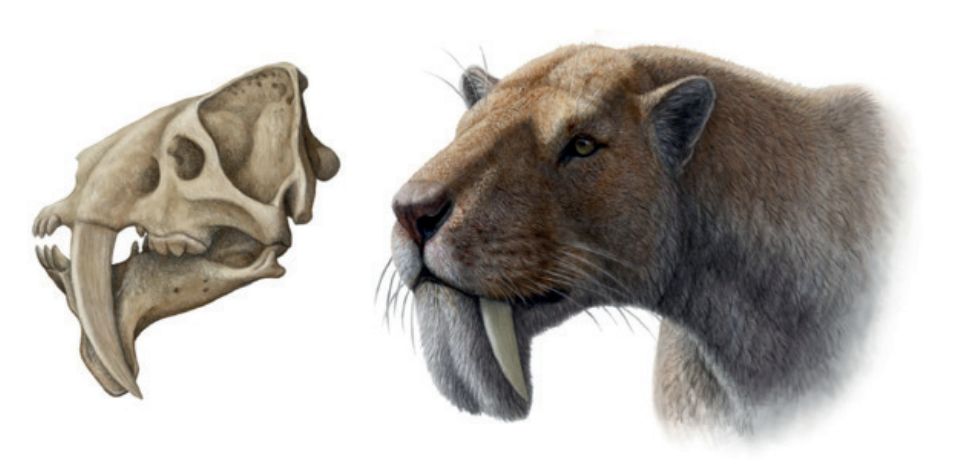
Barbourofelis was a heavyweight among saber-toothed predators. Its massive frame and muscular build gave it a bear-like appearance, and its upper canines were so long and flattened they resemble daggers more than teeth. Barbourofelis lived in North America, stalking prey that often weighed as much or more than it did. What makes this creature stand out is the robust nature of its jaws and neck—almost as if evolution gave it an extra dose of power to drive those teeth into thick hides. There’s something awe-inspiring about imagining Barbourofelis in action, a silent shadow moving through dense forests, every muscle coiled for the hunt. Its story is a reminder of how strength and special adaptations can shape an animal’s world—and how even the biggest, boldest hunters are part of a larger, fragile web.
A Tiny Saber-Tooth: Eusmilus
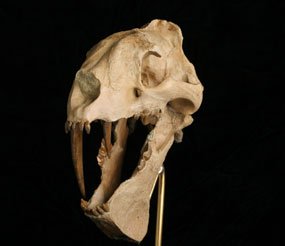
Eusmilus flips the script on our usual image of saber-toothed beasts. This nimravid was smaller than a modern bobcat, but its teeth were exaggeratedly long for its size. Living in North America and Eurasia, Eusmilus probably hunted small mammals and birds, using stealth and speed rather than brute strength. Its dainty frame helped it slip through dense underbrush, while its saber teeth made quick work of prey. Imagine a pocket-sized predator with all the fierceness of its giant cousins—a living contradiction that’s hard not to find endearing. Eusmilus’s existence proves that even in the ancient world, you didn’t have to be big to be bold. Sometimes, the smallest hunters leave the sharpest impression.
The Arctic Sabertooth: Dinictis
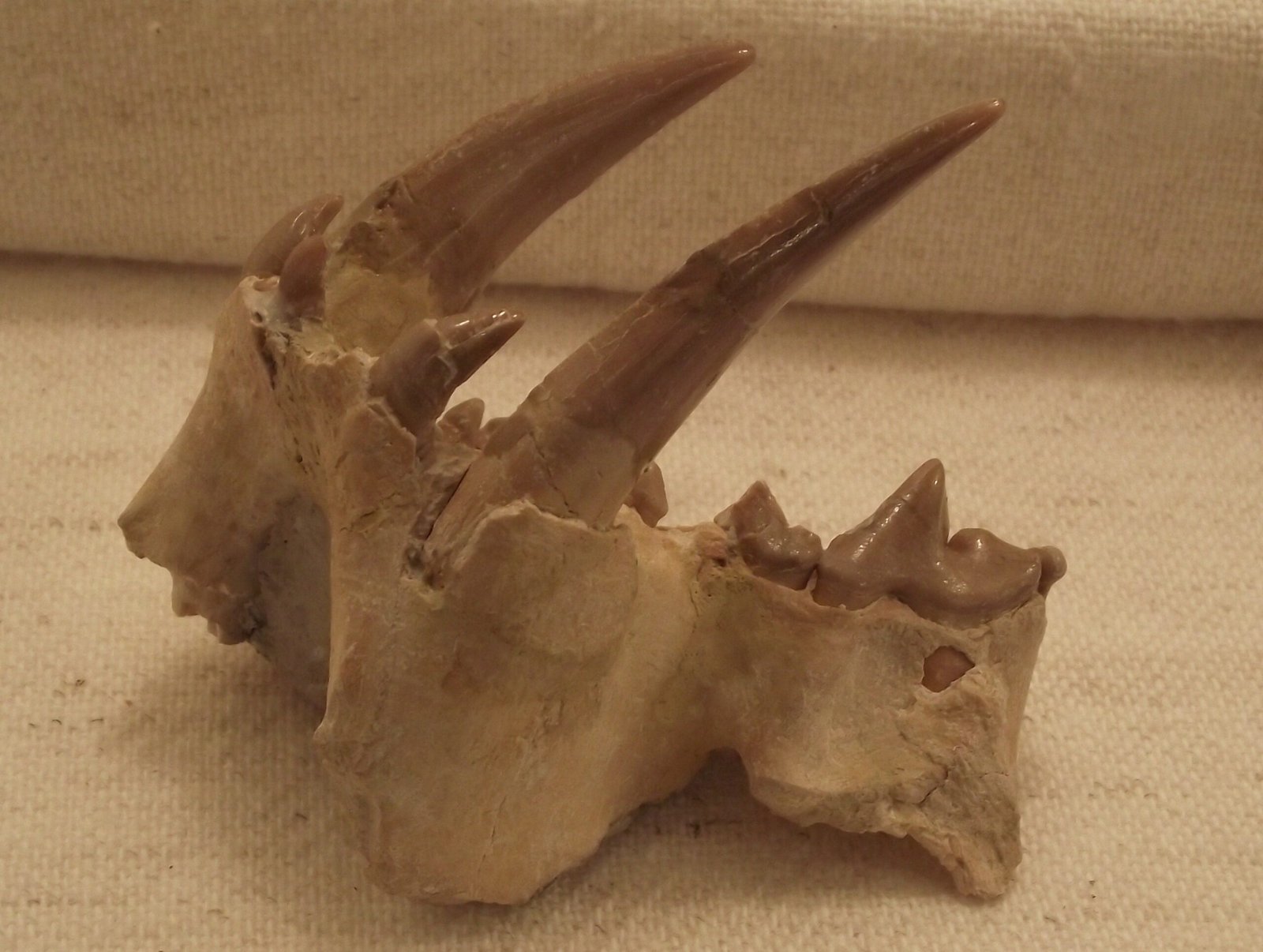
Dinictis is another nimravid that brings a touch of the unexpected to this ancient cast. It lived in North America during a time when icy winds swept across open plains. Unlike its more famous relatives, Dinictis had relatively short saber teeth, but they were still effective for their purpose. Its slender body helped it slip through snowdrifts and hunt agile prey, like rabbits and small deer. There’s a certain beauty in imagining Dinictis against a backdrop of frost and pine, its coat blending with the winter landscape. While not the largest or most fearsome of the saber-toothed predators, Dinictis carved out a living through adaptability and quiet persistence. Its story is a gentle reminder that survival often goes to those who can weather life’s harshest storms.
South America’s Fierce Cat: Machairodus Catocopis
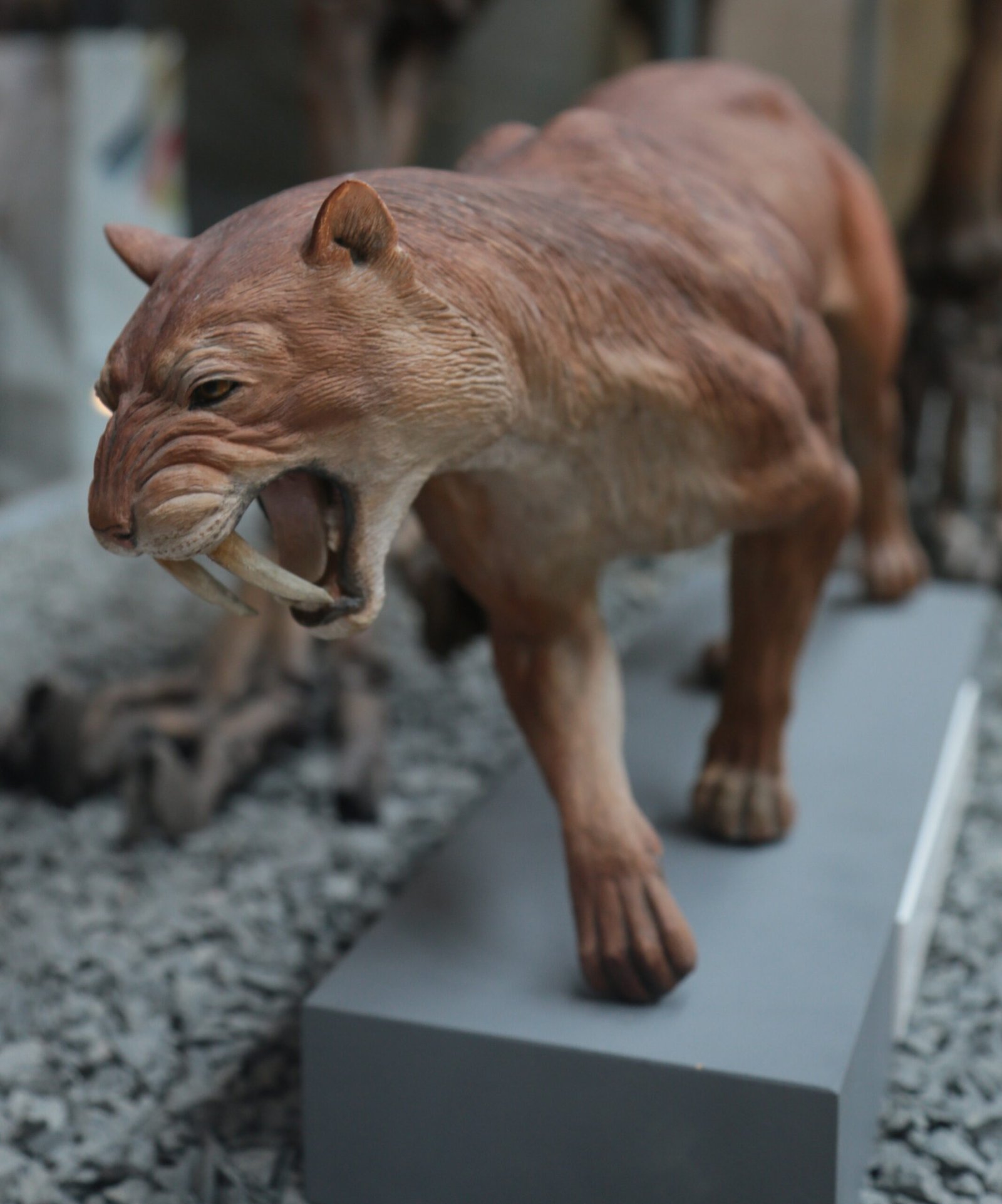
Machairodus Catocopis might have a mouthful of a name, but its story is straightforward and fierce. This ancient cat prowled prehistoric South America, using its saber teeth to hunt giant ground sloths and other formidable prey. Its fossils reveal a creature adapted to both open plains and dense forests—a true survivor in a land of giants. The most captivating thing about Machairodus Catocopis is its combination of power and agility. Imagine it weaving through towering ferns, eyes sharp and muscles tense, ready to pounce. There’s an inspiring sense of determination in its legacy, a reminder that even the most intimidating environments can be conquered by those who dare. Machairodus Catocopis invites us to respect the boldness of the past, and to see the wild in every corner of the world.
The Broad-Toothed Predator: Lokotunjailurus
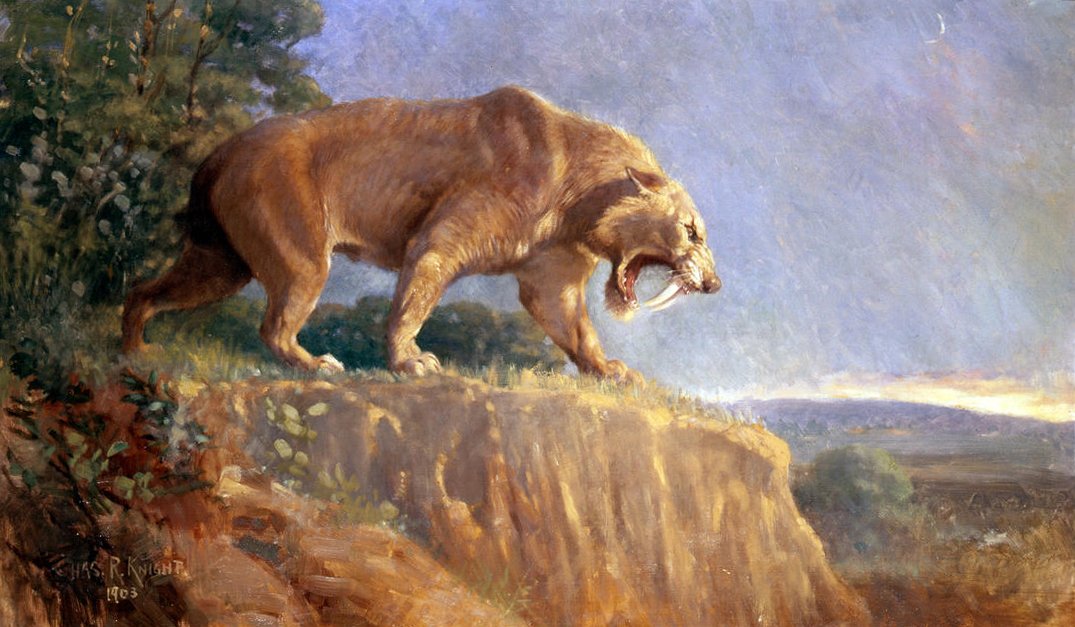
Lokotunjailurus is a saber-toothed cat whose very name hints at distant lands and ancient secrets. Found in Africa, it stood out for its particularly broad saber teeth—thick, powerful, and perfectly suited for slicing. Lokotunjailurus hunted in open savannas, a landscape filled with fast-moving prey and sudden danger. What makes this predator so fascinating is its apparent willingness to adapt—its fossils show a range of tooth shapes, as if it was always testing new tools for survival. There’s something quietly hopeful about that kind of flexibility, a willingness to change as the world changes. Lokotunjailurus’s story is one of curiosity and grit, reminding us that sometimes the best hunters are those who keep learning, even when the odds are stacked high.
The Fierce False Saber: Nimravus
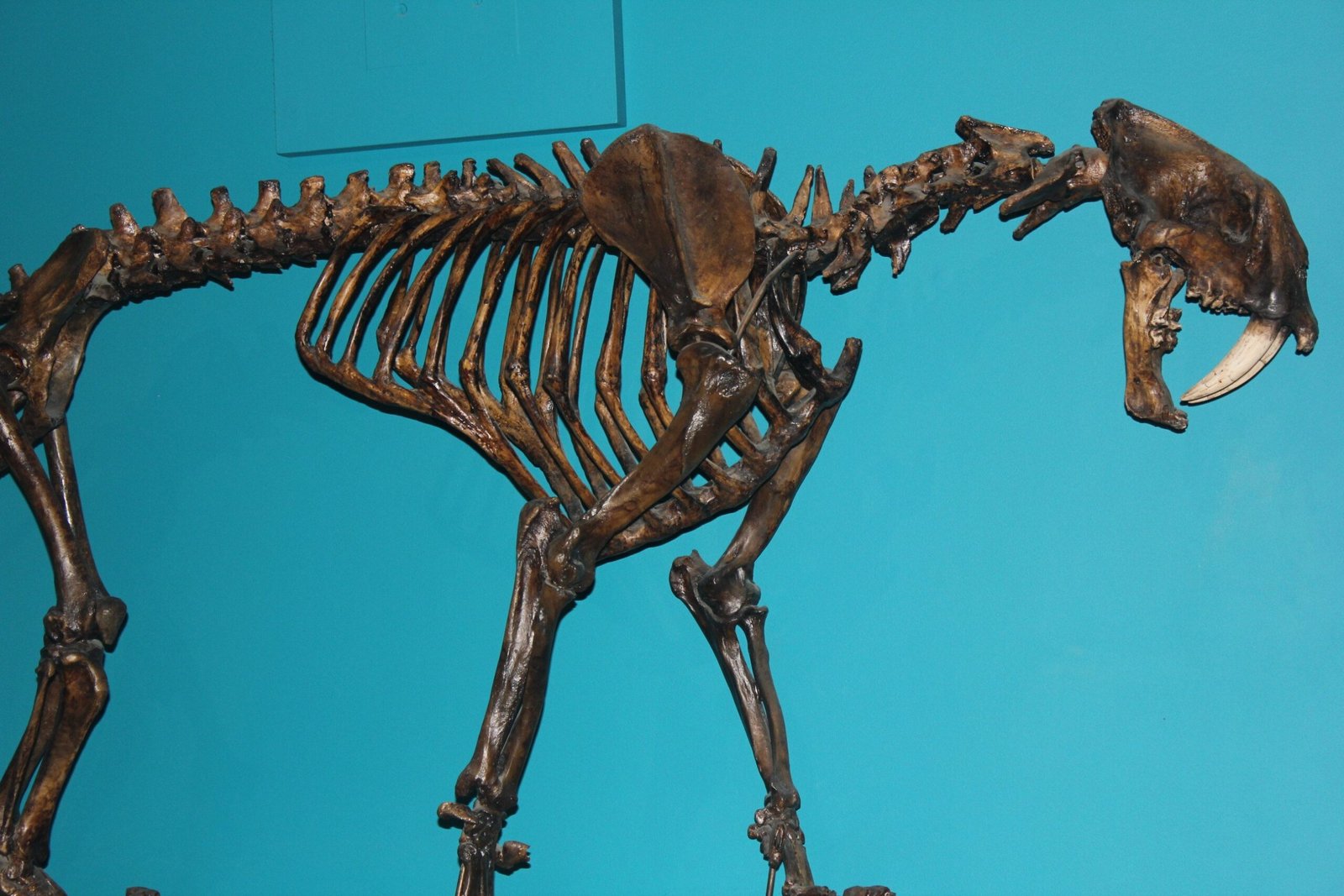
Nimravus is another nimravid that earned its place among the saber-toothed elite, even if it’s not a true cat. It roamed North America and Europe, blending speed and stealth in a body built for the chase. Its saber teeth were shorter and more delicate than some, but they were still formidable weapons. Nimravus likely targeted smaller game, relying on ambush and quick reflexes. There’s a delicate balance in its design—graceful enough to sprint, yet deadly in close quarters. What’s touching about Nimravus is the way it represents life’s in-between spaces, those animals that aren’t quite one thing or another, but thrive all the same. Its fossils remind us that nature’s boundaries are often blurrier than they seem, and that every creature has its own way of writing survival into stone.
The Saber-Toothed Marsupial: Anachlysictis
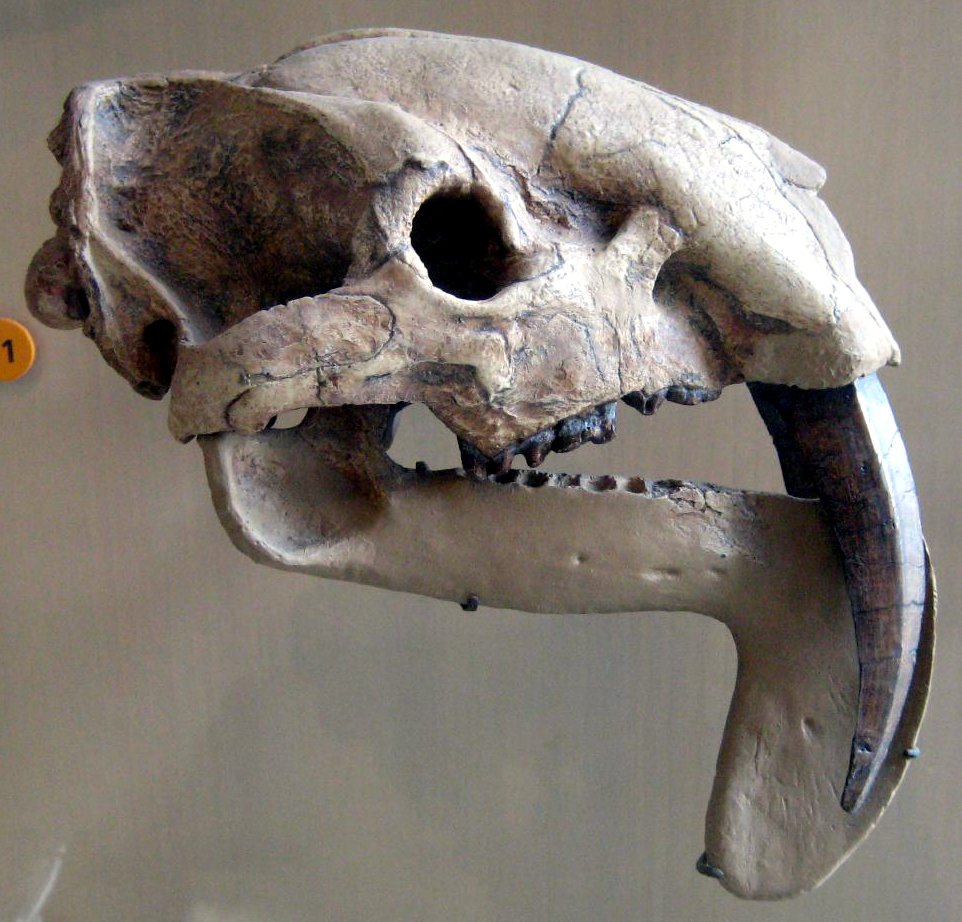
Anachlysictis is a lesser-known saber-toothed predator from South America, and like Thylacosmilus, it was a marsupial, not a true cat. Its saber teeth were long and curved, and its jaw muscles were adapted for powerful bites. Living in a world full of giant armadillos and massive flightless birds, Anachlysictis had to be both brave and clever. Its fossils are rare, but they paint a picture of a predator that found its own unique path, carving out a niche among strange and wonderful neighbors. There’s something quietly inspiring about a creature that doesn’t fit the mold but flourishes anyway. Anachlysictis reminds us that the wild is full of surprises, and that every animal—no matter how odd—has a story worth telling.
The Ancient Forest Stalker: Pogonodon
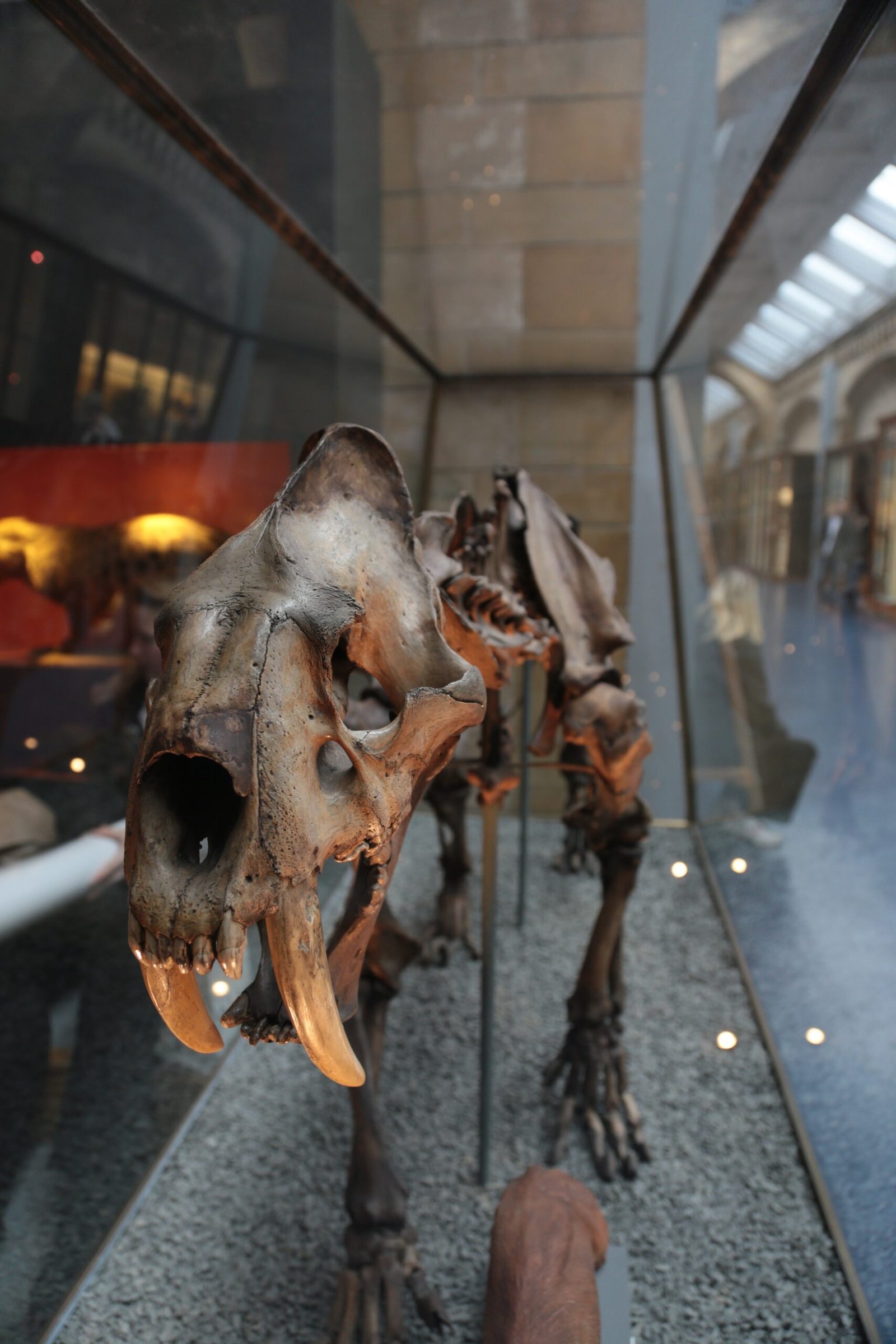
Pogonodon was a nimravid that specialized in stealth and surprise. Living in North America’s ancient forests, it hunted smaller mammals, using its saber teeth to deliver precise, lethal bites. Pogonodon’s build was sleek and agile, more like a modern-day lynx than a lion. What’s captivating about Pogonodon is its quiet mastery—never the biggest or boldest, but always perfectly tuned to its surroundings. Its fossils are often found alongside those of its prey, frozen in a moment of ancient drama. There’s a gentle wisdom in the way Pogonodon lived, a sense that sometimes the world’s greatest hunters are also its most invisible. Pogonodon’s story is a tribute to the art of patience, and to the beauty of blending in.
The Serengeti Sabertooth: Yoshi
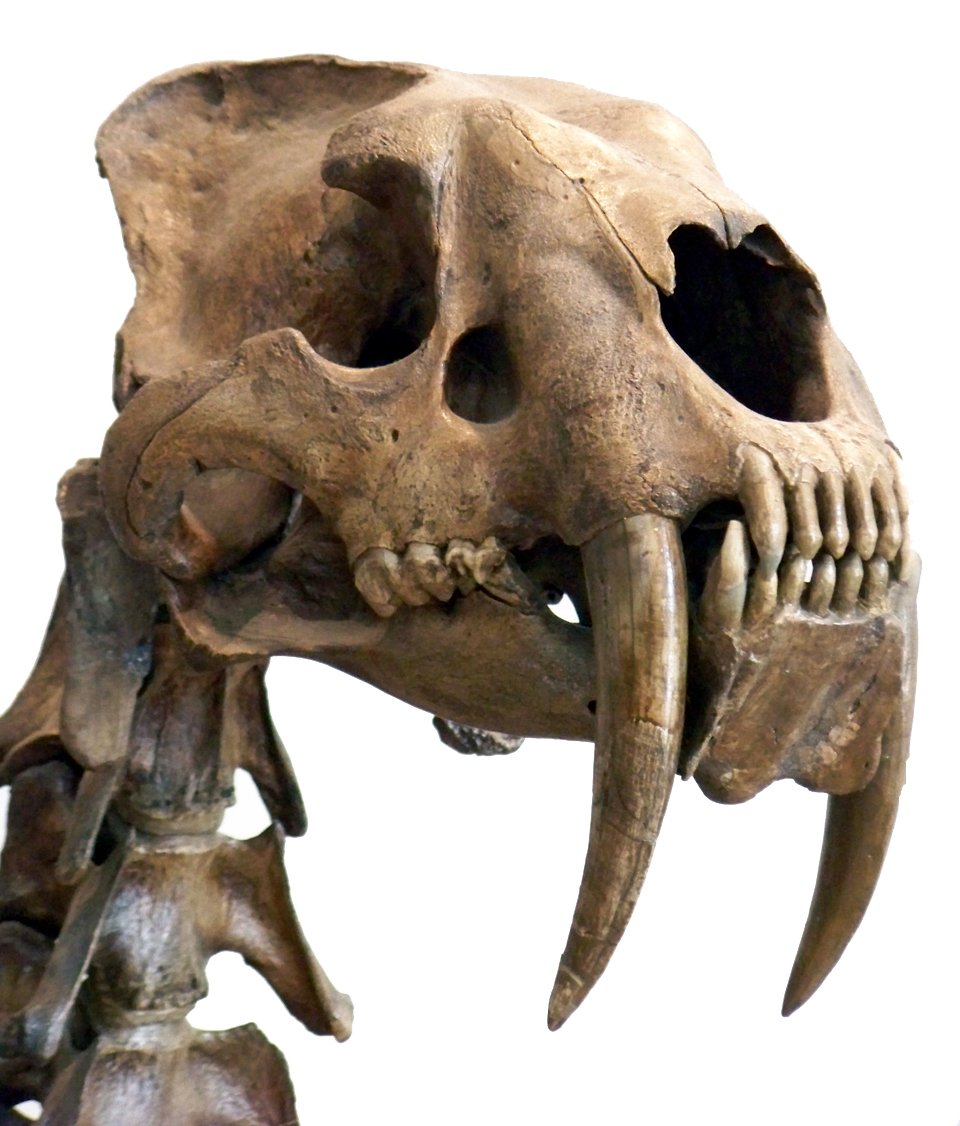
Yoshi is a recently discovered saber-toothed cat from Africa, its name inspired by the paleontologist’s playful spirit. This predator lived in the Miocene, prowling the ancient Serengeti and hunting herds of grazing animals. Yoshi’s saber teeth were slender and elegant, and its body was built for speed. What makes Yoshi special is the sense of excitement it brings—a reminder that even today, new fossils can rewrite our understanding of the past. There’s a contagious sense of wonder in each new discovery, like opening a window to a world we thought we’d lost. Yoshi’s story is still being written, but it already teaches us that the wild is far from finished, and that every stone might hide a secret.
The Saber-Toothed Mystery: Metailurus

Metailurus is a saber-toothed cat wrapped in mystery, with fossils found across Europe and Asia. Its saber teeth weren’t as long as some, but they were strong and slightly curved, perfect for a versatile hunter. Metailurus likely hunted everything from antelope to small horses, adapting its tactics to each prey. Its bones have been unearthed in a wide range of habitats, from woodlands to open plains, suggesting a cat that could thrive almost anywhere. There’s something quietly impressive about that kind of flexibility, a willingness to try new things and go new places. Metailurus reminds us that adaptability is just as important as strength, and that every journey leaves a mark, even if the story isn’t finished yet.
The Ancient Apex: Amphimachairodus
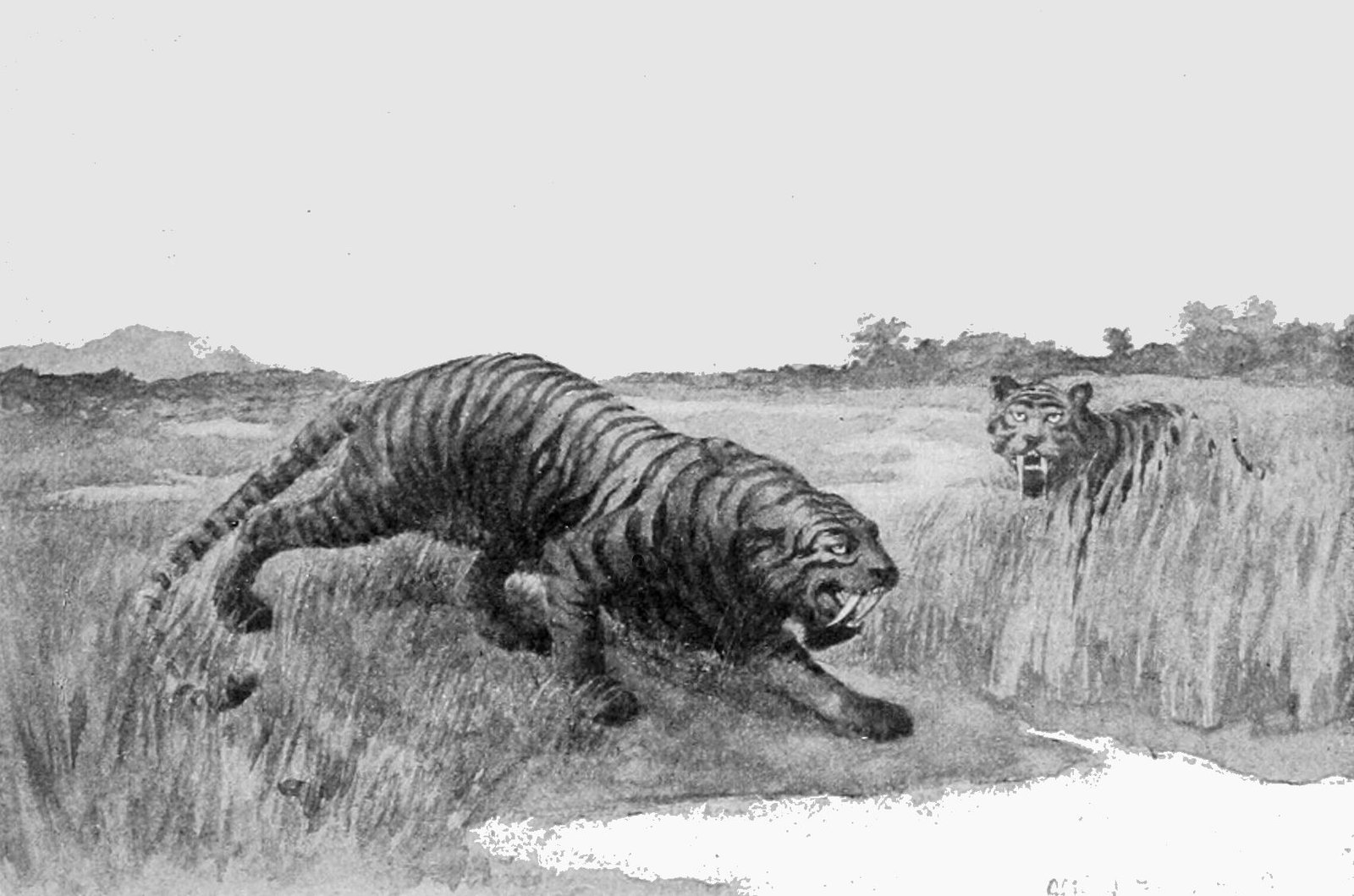
Amphimachairodus was one of the largest saber-toothed cats to ever live, rivaling or even surpassing Smilodon in size. This giant prowled Europe, Asia, and Africa, hunting massive prey with the help of its long, powerful canines. Amphimachairodus’s fossils are found in places that were once teeming with wildlife, hinting at a world where every hunt was a gamble. What’s awe-inspiring about Amphimachairodus is its sheer presence—imagine a predator as tall as a lion, yet carrying teeth that could pierce armor. There’s a majesty to its story, a sense that the past was filled with creatures as impressive as any legend. Amphimachairodus stands as a reminder that the wild has always had its giants, and that every age has its rulers.
The Gentle Giant: Adilophontes

Adilophontes may not be the most famous saber-toothed cat, but its story is quietly fascinating. Living in North America during the Oligocene, it had a slender build and moderately long saber teeth. Adilophontes likely preferred forested habitats, where it could slip between the trees and ambush prey. Its fossils suggest a cat that relied on cunning and speed, rather than sheer power. There’s something gentle in the way Adilophontes is reconstructed—its face less fierce, its stance almost cautious. It reminds us that even among the most fearsome predators, there’s room for subtlety and grace. Adilophontes’s story is a gentle nudge to look beyond the obvious, to find beauty in quiet strength and soft footsteps.
The Silent Forest Phantom: Eusmilus Bidentatus
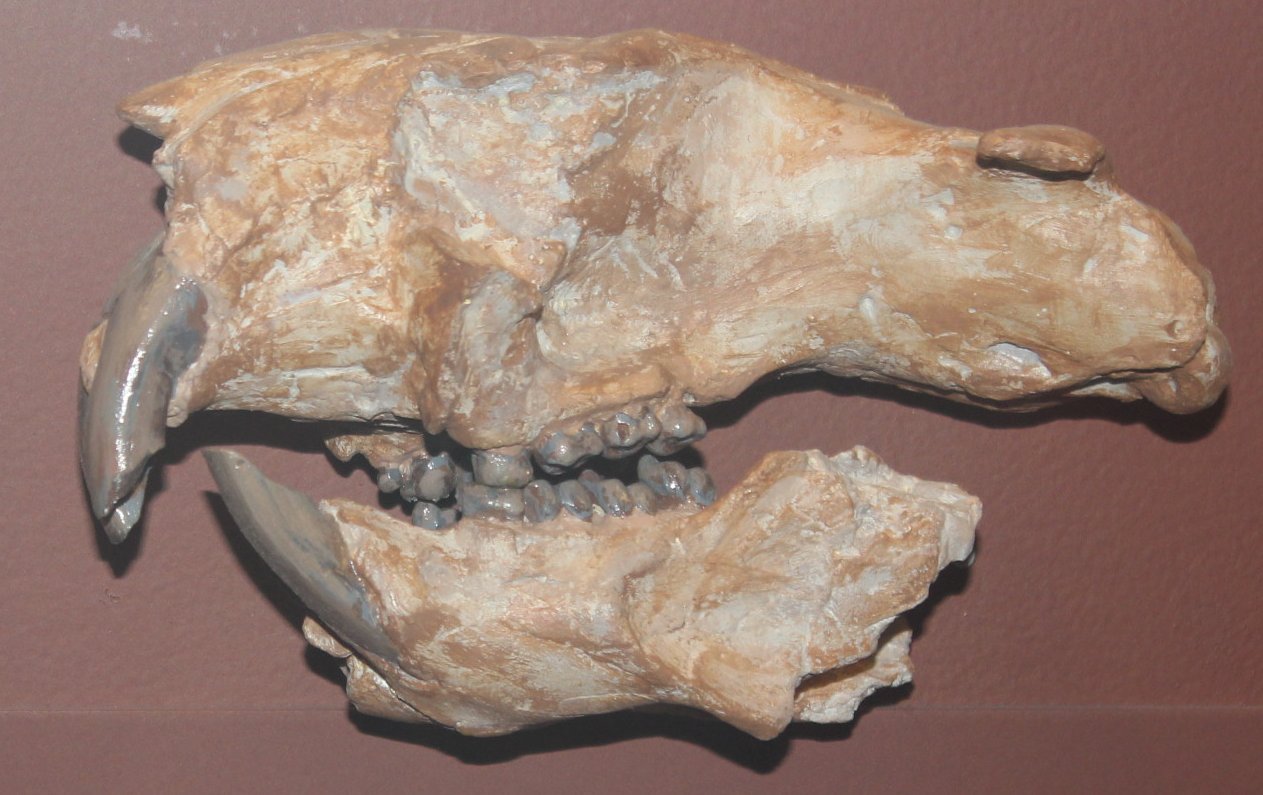
Eusmilus Bidentatus was a small, nimble saber-toothed predator that made its home in the dense forests of Eurasia. Its saber teeth were prominent, but its size and build meant it relied on stealth rather than confrontation. Eusmilus Bidentatus probably hunted at dawn or dusk, slipping through shadows and pouncing on unsuspecting prey. There’s something almost ghostly about its story—a silent phantom weaving through the trees, leaving little trace behind. Its presence in the fossil record is a gentle whisper from the past, a reminder that some of the wildest lives are lived in quiet places. Eusmilus Bidentatus invites us to look for the hidden wonders, both in history and in the world around us.
The Adaptable Hunter: Paramachairodus Orientalis
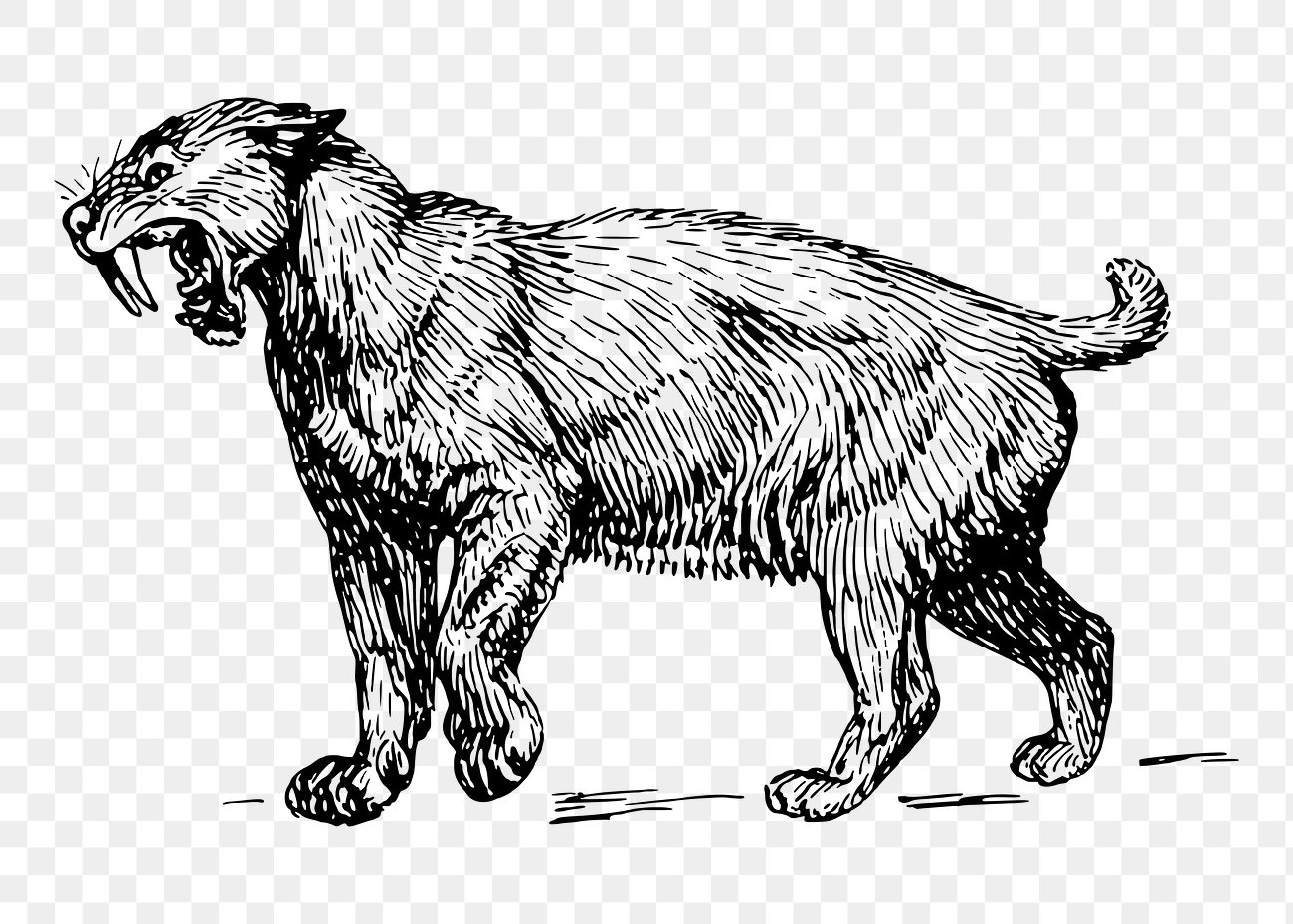
Paramachairodus Orientalis was a saber-toothed cat with a special talent for adaptation. Living in Asia, it survived through times of dramatic climate change, shifting from forest to open plain as needed. Its saber teeth were sharp and curved, ideal for a variety of hunting styles. Fossils suggest it preyed on everything from deer to ancient horses, always finding a way to make a meal. There’s a quiet bravery in Paramachairodus Orientalis’s story—a willingness to face change head-on, to try new things when the old ways no longer worked. Its legacy is one of resilience, a testament to the power of persistence in a world that’s always moving. Paramachairodus Orientalis reminds us that the future belongs to those who can adapt and thrive, no matter the challenge.
The Last Saber-Tooth: Panthera Atrox
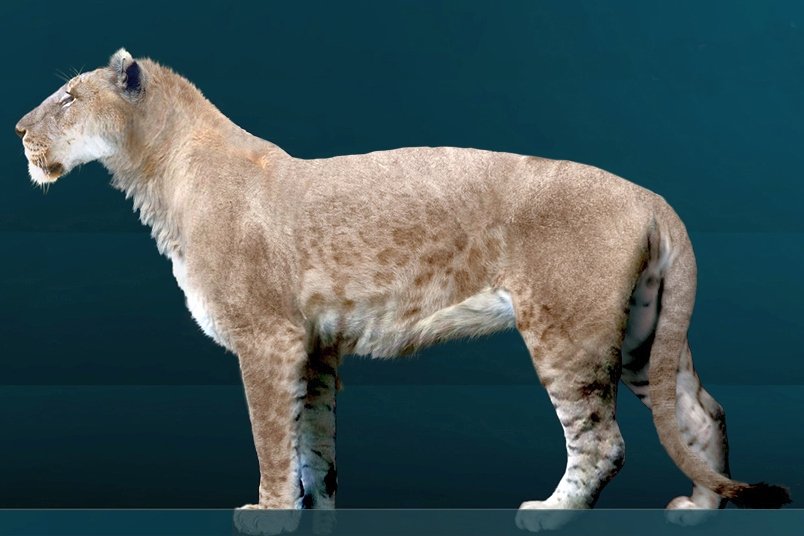
Panthera Atrox, often called the “American lion,” isn’t a true saber-toothed cat, but its story is too compelling to leave out. Living in North America during the Ice Age, Panthera Atrox was one of the largest cats ever to walk the Earth. It didn’t have saber teeth, but it lived alongside Smilodon and other saber-toothed predators, competing for the same prey. There’s a sense of finality in its tale—a giant among giants, marking the end of an era. Its fossils are found across the continent, a silent record of vanished greatness. Panthera Atrox reminds us that every age has its titans, and that the end of one story is always the beginning of another. Even in extinction, there’s a quiet dignity, an echo of wildness that never quite fades away.
Conclusion

The world of saber-toothed predators is far bigger and more varied than most people imagine. Beyond Smilodon, a whole cast of fierce, graceful, and sometimes downright odd creatures once prowled Earth’s forests, plains, and marshes. Each had its own way of surviving, thriving, or quietly fading away. These ancient cats—and their lookalike relatives—remind us that the wild is always changing, always experimenting with new forms and strategies. Today’s big cats carry a little piece of that mystery and majesty in their eyes, their movements, and their spirits. As we protect and cherish the felines we share our lives with now, let’s remember the wildness that shaped them—and us. Who knows what other wonders might still be hidden, waiting to be discovered beneath our feet?

Suhail Ahmed is a passionate digital professional and nature enthusiast with over 8 years of experience in content strategy, SEO, web development, and digital operations. Alongside his freelance journey, Suhail actively contributes to nature and wildlife platforms like Feline Fam, where he channels his curiosity for the Feline into engaging, educational storytelling.
With a strong background in managing digital ecosystems — from ecommerce stores and WordPress websites to social media and automation — Suhail merges technical precision with creative insight. His content reflects a rare balance: SEO-friendly yet deeply human, data-informed yet emotionally resonant.
Driven by a love for discovery and storytelling, Suhail believes in using digital platforms to amplify causes that matter — especially those protecting Earth’s biodiversity and inspiring sustainable living. Whether he’s managing online projects or crafting wildlife content, his goal remains the same: to inform, inspire, and leave a positive digital footprint.






